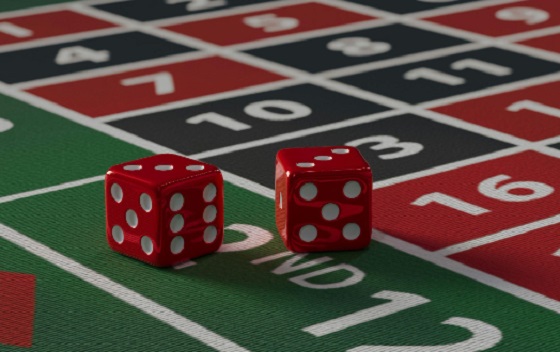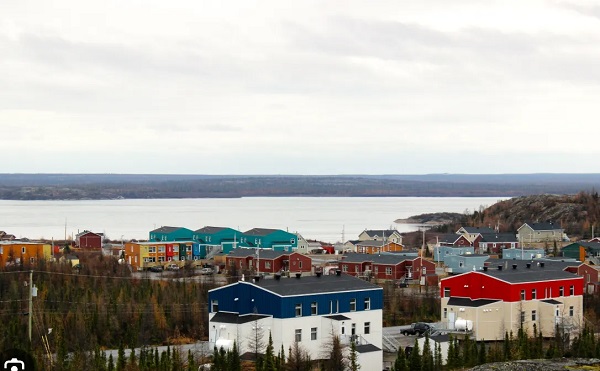Bruce Dowbiggin
Rogers Buys Out Bell In MLSE Shakeup: What Does It Mean For Fans?
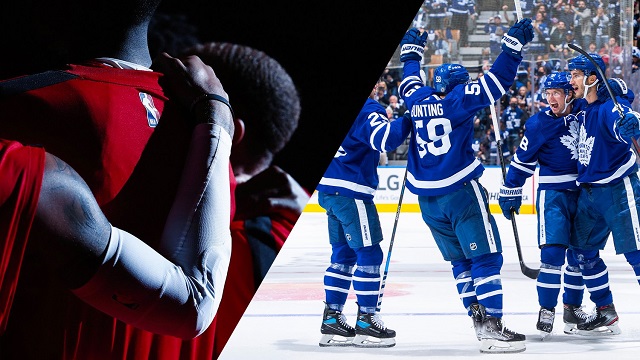
There is an old joke that Canada has two seasons. Summer. And the months when the Toronto Maple Leafs lead the nightly Canadian sports networks. Perhaps it’s not that bad, but for those who don’t live in southern Ontario it often feels that way.
The reason, some said, for this Buds obsession was that both TSN and Rogers Sportsnet were part owners of the team through Maple Leaf Sports & Entertainment, a business giant created in 2011 when the warring telcos took equal percentage shares in MLSE (Larry Tanenebaum took the final 25 percent, now 20 percent after selling a share to The Ontario Municipal Employees Retirement System.)
At the time the merger of Bell (TSN) and Sportsnet (Rogers) was compared to Twitter and Facebook deciding to partner. Such was the rivalry that many predicted it wouldn’t last. But it did—if you don’t include Stanley Cups. Until this past week when it was announced that, if approved, Rogers will buy out Bell’s stake in MLSE, leaving it with 75 percent ownership. The process should close next year.
Rogers also has an option to buy out Tanenbaum next year, giving it complete control of the Leafs, Raptors, Argos (CFL), Toronto FC (MLS) and Toronto’s ScotiaBank Centre, among other baubles. (The new Toronto WNBA team is owned by Tannenbaum and several partners.)
Why the deal? Why now? Despite the huge national audience for the NHL, NBA and MLB, the component parts are said to be underperforming in a time when equity in sports franchises is soaring. Rogers’ national NHL TV contract is a significant drain on revenues. The Blue Jays’ flopping in the standings has left them a “stranded money-losing team” whose value isn’t fully reflected within Rogers. The Raptors are now also-rans.

Bell’s debt rating was downgraded to one notch above junk in August by Moody’s Investors Service. While not to the point of selling pencils there’s a thought that packaged as a group under one owner, the teams will now be more lucrative and, possibly, lead to an IPO in the future.
What does it mean for sports fans? For now, not much change. TSN is getting a 20-year agreement to get 50 percent of the regular-season Leafs and Raptors games. So it will have an NHL/ NBA presence until April. (It also has regional Montreal Canadiens rights.) TSN also has a strong NFL, tennis and golf presence. Rogers will have the existing property rights for the NHL playoffs as well as regional interests in Vancouver, Calgary, Edmonton and Ottawa. Plus its existing monopoly on the Blue Jays broadcasts.
Bell is reportedly interested in cutting its property inventory and concentrating on “5G, cloud and enterprise solutions”. TSN says it remains the prime media backer of the CFL, even though it no longer has an ownership position. Mediocre Toronto FC remain an add-on with a niche audience. As NHL national rights holder, Sportsnet (using CBC as a cutout) will still be the major outlet for postseason hockey. It’s also the exclusive home of the Blue Jays and the MLB postseason.
What does it mean in business terms? Despite the apparent cordiality of the deal, there is a fly in the ointment should digital companies such as Amazon, Prime, Apple, YouTube or Disney decide to bid on the primo national NHL broadcast rights packages. Already big leagues such as NFL, MLB and NBA have hived off packages to these outfits. Could they drive the price past Rogers’ comfort zone?
All this begs the question of what happens to the Raptors, Argos and Toronto FC which have fallen from their hip status of years prior. It’s well known that Rogers execs aren’t fond of Raptors president/ GM Masai Ujiri. Will they get the love in the C suite to bid on the top basketball contracts? Ditto Toronto FC, a pet project of Tanenbaum’s. It competes nationally with other Canadian teams. Will it have an ally in the front office?
If there is an ally it will have to be the peripatetic new CEO Keith Pelley who returns to Canada from running the European PGA Tour after stints running TSN, Rogers Sportsnet, the 2010 Winter Olympics and the Toronto Argos. Pelley knows all the broadcast and sports players firsthand from his prior gigs. He’s seen as an innovator but he also has good friends in the traditional sports leagues.
The one certainty is that cable and satellite packages will not decrease in price. Nor will ticket prices as pro sports continues to stretch the boundaries on how much people will pay for tickets (still a key revenue for NHL owners). And, for those wondering, the chances of leading newscasts with a Maple Leafs practice will be remain very strong for the future.
Bruce Dowbiggin @dowbboy is the editor of Not The Public Broadcaster A two-time winner of the Gemini Award as Canada’s top television sports broadcaster, he’s a regular contributor to Sirius XM Canada Talks Ch. 167. His new book Deal With It: The Trades That Stunned The NHL And Changed hockey is now available on Amazon. Inexact Science: The Six Most Compelling Draft Years In NHL History, his previous book with his son Evan, was voted the seventh-best professional hockey book of all time by bookauthority.org . His 2004 book Money Players was voted sixth best on the same list, and is available via brucedowbigginbooks.ca.
Bruce Dowbiggin
Is HNIC Ready For The Winnipeg Jets To Be Canada’s Heroes?

It’s fair to say everyone in hockey wanted the Winnipeg Jets back in the NHL. They became everyone’s darlings in 2011 when the Atlanta Thrashers, the league’s second stab at a franchise in Georgia, were sold to Canadian interests including businessman David Thomson. (Ed.: Gary Bettman’s try number three in Atlanta is upcoming.).
Yes, the market is tiny. Yes, the arena is too small. Yes, Thomson’s wealth is holding back a sea of inevitability. But sentimentalists remembering the Bobby Hull WHA Jets and the Dale Hawerchuk NHL Jets threw aside their skepticism to welcome back the Jets. The throwback uniforms with their hints at Canada’s air force past were an understated nod to their modest pretensions. It was a perfect story.

The question now, however, is will the same folks get dewey-eyed about the Jets if they become the first Canadian team to win the Stanley Cup since (checks his cards) Montreal and Patrick Roy did it in 1993. It would be helpful in this election year if something were to bind a nation torn apart by politics. The Gordie Howe Elbows Up analogy is more than shopworn, and Terry Fox can only be resurrected so often. So a Cup win might be a welcome salve.
But the approved script has long dictated that the Canadian team to break the schneid should be one of the glamour twins of the NHL’s Canadian content, the Edmonton Oilers or the (gulp) Toronto Maple Leafs. The Oilers and their superstar Connor McDavid barely lost out last spring to Florida while the Leafs, laden with superstars like Auston Matthews and William Nylander, are overdue for a long playoff run.
Hockey Night In Canada positively pants for the chance to gush over these two squads each week. When was the last time Toronto played an afternoon game so HNIC could showcase the Jets? Like, never. Same for the Oilers, who with their glittering stars like McDavid Leon Draisaitl and Ryan Nugent Hopkins are the primary tenants of the doubleheader slot, followed by Calgary. Winnipeg? We’ll get to them.

But there’s going to be no ignoring them in the spring of 2025. The Jets in the northern outpost in Manitoba were the top team in the entire league in 2024-25. They’ll comfortably win the Presidents Cup as the No. 1 squad and have home-ice advantage throughout the playoffs. They have the league’s best goalie in Connor Hellebuyck (an American) and a stable of top scorers led by Kyle Connor and Mark Schiefele. Because Winnipeg is on a lot of No Trade lists, they have built themselves through the draft and thrifty budgeting.
But will the same people who swooned over the Jets in 2011 now find them as adorable if they ruin the Stanley Cup plot lines of the Oilers, Leafs and Ottawa Senators? Will the fans of Canadian teams in Vancouver, Calgary and Montreal not making the postseason take the Jets to their hearts or will they be as phoney as the Mike Myers commercials for the Liberals?
In addition, the Jets will be swamped by national media should they proceed through the playoffs. It’s one thing to carry the expectations of Winnipeg and Manitoba. It’s another to foot the bill for a hockey crazy county. We remember Vancouver’s GM Mike Gillis during the Canucks 2011 Cup run bemoaning the late arrivers of the press trying to critique his team as they made their way through the playoffs.
It will be no picnic for the Jets, however strong they’ve been in the regular season. No one was gunning for them as they might for the Oilers or Leafs. They will now get their opponents’ best game night after night. Hellebuyck has been a top three goalie in the NHL for a while, winning the Vezina Trophy, but his playoff performance hasn’t matched that of his regular-season version.
Already the injury bug that sidelines so many Cup dreams is biting at the Jets. Nikolaj Ehlers collided with a linesman in Saturday’s OT win in Chicago. Defenceman Dylan Samberg is also questionable after stopping a McDavid slap shot with his leg. A rash of injuries has ended the run of many a worthy Cup aspirant in the past. Can Winnipeg’s depth sustain the churn of seven weeks of all-out hockey?
As always for the small-market Jets time is of the essence. Keeping this core together is difficult with large markets lusting after your players. With the NHL salary cap going up it remains a chore to keep their top players. Schiefele and Hellebuyck are tied up longterm, but 40-goal man Connor is a UFA after next season while Ehlers is not signed after this season. Young Cole Perfetti will be an RFA in 2026. Etc.
So how much do Canadians love the Jets if they sneak in and steal the hero role by winning a Canadian Cup? Lets see Ron MacLean pun his way through that one.
Bruce Dowbiggin @dowbboy is the editor of Not The Public Broadcaster A two-time winner of the Gemini Award as Canada’s top television sports broadcaster. His new book Deal With It: The Trades That Stunned The NHL And Changed Hockey is now available on Amazon. Inexact Science: The Six Most Compelling Draft Years In NHL History, his previous book with his son Evan, was voted the seventh-best professional hockey book of all time by bookauthority.org. You can see all his books at brucedowbigginbooks.ca.
Bruce Dowbiggin
Bettman Gives Rogers Keys To The Empire. Nothing Will Change
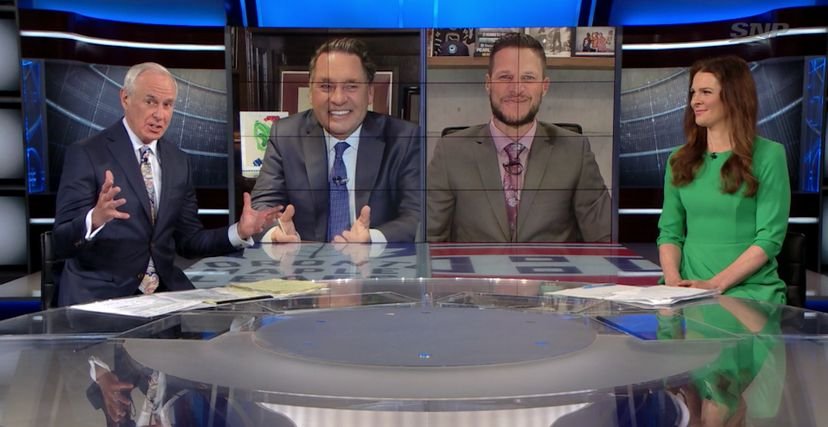
Good news if you like the way Rogers Sportsnet covers hockey in Canada. You’re about to get a whole lot more of it. In a move that sums up Gary Bettman’s unique broadcast philosophy the NHL has awarded the Canadian TV/ digital/ streaming rights to Rogers for the next 12 years. The price tag? 12 billion U.S. dollars (about $16.B CDN dollars).
While the pattern in modern sports broadcasting rights has been toward sharing the wealth among competing bidders— the NFL has six distinct partners— Bettman the contrarian has opted for a different notion. He’s all in with one Canadian partner, and let his critics STFU.
As opposed to the previous CDN national monopoly awarded to Rogers in 2013 this one bestows national rights in all languages across TV, streaming and digital for all regular-season and playoff games, plus the Stanley Cup Final and all special events. This extends to coverage in all regions. There are some concessions for Rogers to sell limited cutout packages, such as the Monday Night Amazon package they’ve created.
Presuming Pierre Poliievre doesn’t get his way with CBC, Rogers will likely piggyback on their time-sharing agreement for Saturday Hockey Night In Canada to get CBC’s network reach. (There remain many hockey fans who still think CBC has the NHL contract. Go figure.)
Translation: there will be no regional packages for TSN to produce Montreal Canadiens, Ottawa Senators or Toronto Maple Leafs games, for instance. But there will be regional blackouts, because nothing says we are proud of our product like denying it to a larger audience. Conn Smythe would be proud.
At the presser to announce the deal Rogers and Bettman were coy about how much they will charge consumers for the honour of being inundated by content in what now seems likely to be a 36-team league by the time the deal expires. Will costs be added to cable/ satellite packages? How much for streaming? With stories circulating that Rogers massively overbid for the package to get the monopoly it’s apparent that the phone company will be turning over every nickel to make it worthwhile.
Fans are apprehensive and over-saturated with hockey content already. For that reason, the NHL is now desperately looking for ways to lessen the tedium of the 82-game regular schedule with midseason content like the 4 Nations Cup or a World Cup format. In Canada’s hockey-mad environment Rogers will have a passionate market, but even the most fervent fans will only spend so much for their fix.
Already, Rogers is trumpeting its re-acquisition with commercials featuring Ron Maclean doing his breathy feels-like-home voice about how Sportsnet is the natural landing spot for hockey until many of us are dead. Bettman made cooing noises about Rogers’ commitment at the announcement.
But let us cast our minds back to 2013 when the last Rogers/ NHL deal was concocted. We were the sports media columnist at the Mop & Pail at the time and much was made that Rogers would be a technological marvel, re-inventing the way we watched hockey. There would be new camera angles, referee cams, heightened audio, refreshed editorial content etc.

As hockey fans now know Rogers dabbled in the brave new world briefly, blanched at the cost of being creative and largely went back to doing hockey the way it had always been done. Taking no risks. On some regional casts that meant as few as three or four cameras for the action.
But if you were expecting dashboard cameras and drone shots you were sadly disappointed. Similarly there was a brief stab at refreshing the pre-, mid- and postgame content. Hipster George Stromboulopoulos was brought in as a host to attract a larger female audience.
But pretty soon Strombo was gonzo, replaced by the anodyne David Amber (whose dad was once the leader of the journalist union at CBC). Women like former player Jennifer Botterill were brought in to change the gender balance on panels. They then acted pretty much like guys, chalk-talking viewers into numbness. Appointment viewing has become a fallback choice.
The move away for anything controversial came in 2019 with Rogers’ axing of Don Cherry’s Coach’s Corner in a flap over the former coach’s continuing ventures into political or cultural content. Maclean slipped the knife into his meal ticket and continued on the show. After time in limbo, doing location shoots, he was returned full-time to the desk.

As we wrote in June of 2022, the one exception to the standard “serious, sombre, even a touch grim” tone is former defenceman Kevin Bieksa. “Bieksa has been a moveable feast. His insouciance with media has become his ragging on the fellow panelists during intermissions that used to be as much fun as skating in July.” His banter with “insider” Elliotte Friedman is now a lone concession to wit on the show.
Intermissions are numbingly predictable, and Rogers’ stable of analysts and play-by-play announcers outside of HNIC is unchallenging to the orthodoxy of PxP being a radio call over TV pictures. Name one star beside Bieksa that has been produced by Rogers’ “safe” broadcast style since 2013. They’d fit in perfectly in a 1980s hockey broadcast. Now compare it with the lively Amazon broadcasts hosted by Adnan Virk and Andi Petrillo.
This leaves a lingering question. What happens to TSN? Many prefer the editorial and studio profile of TSN on Trade Deadline Day or Free Agent frenzy. TSN locked up its stars such as James Duthie and Bob McKenzie when the last deal was signed. But there isn’t enough live content this time to support keeping a full roster anymore. Who will stay and who will go? (TSN’s president Stewart Johnson is the new commissioner of the CFL).
And with Rogers taking full control of MLSE (Maple Leafs, Raptors, Argos, Toronto FC) TSN is left with the CFL and packages of NFL, golf, tennis, some auto racing and international soccer. Is that enough on which to float a network? There have been rumours that Bell, owner of TSN, is interested in divesting itself of the high cost of sports broadcasting. Should that happen— who has the money to replace them?— the effect will be seismic in Canadian broadcasting.
For now, watch how much pressure the NHL puts on Rogers to up its game. More importantly what will happen when Bettman finally retires and the league has a new vision since 1992? Rogers has sewn up its end. Will the audience go with them?
Bruce Dowbiggin @dowbboy is the editor of Not The Public Broadcaster A two-time winner of the Gemini Award as Canada’s top television sports broadcaster, his new book Deal With It: The Trades That Stunned The NHL And Changed hockey is now available on Amazon. Inexact Science: The Six Most Compelling Draft Years In NHL History, his previous book with his son Evan, was voted the seventh-best professional hockey book of all time by bookauthority.org . His 2004 book Money Players was voted sixth best on the same list, and is available via brucedowbigginbooks.ca.
-
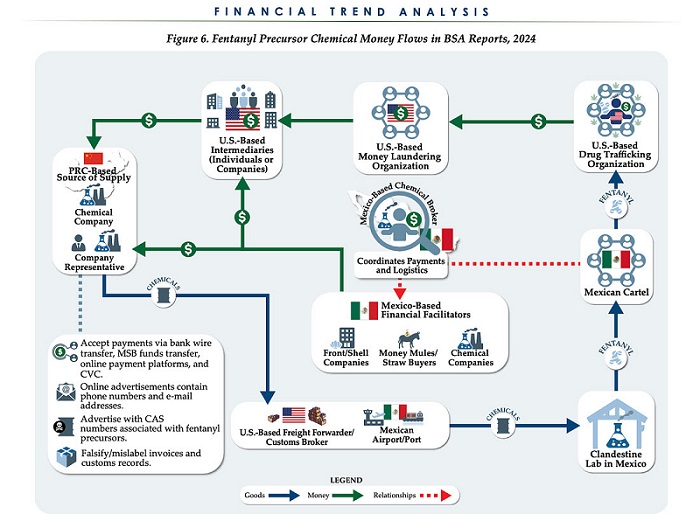
 Business1 day ago
Business1 day agoChina, Mexico, Canada Flagged in $1.4 Billion Fentanyl Trade by U.S. Financial Watchdog
-
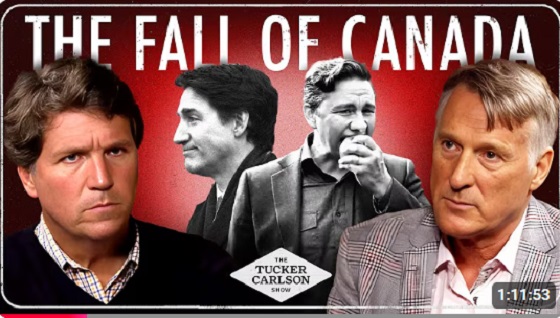
 2025 Federal Election2 days ago
2025 Federal Election2 days agoTucker Carlson Interviews Maxime Bernier: Trump’s Tariffs, Mass Immigration, and the Oncoming Canadian Revolution
-

 espionage1 day ago
espionage1 day agoEx-NYPD Cop Jailed in Beijing’s Transnational Repatriation Plot, Canada Remains Soft Target
-
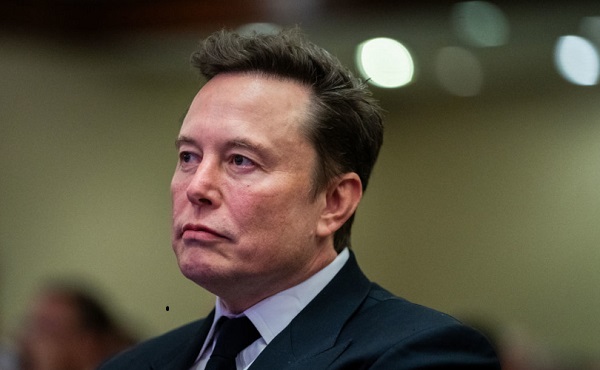
 Business2 days ago
Business2 days agoDOGE Is Ending The ‘Eternal Life’ Of Government
-

 2025 Federal Election1 day ago
2025 Federal Election1 day agoBREAKING from THE BUREAU: Pro-Beijing Group That Pushed Erin O’Toole’s Exit Warns Chinese Canadians to “Vote Carefully”
-

 2025 Federal Election2 days ago
2025 Federal Election2 days agoCanada drops retaliatory tariffs on automakers, pauses other tariffs
-

 Daily Caller1 day ago
Daily Caller1 day agoDOJ Releases Dossier Of Deported Maryland Man’s Alleged MS-13 Gang Ties
-

 Daily Caller1 day ago
Daily Caller1 day agoTrump Executive Orders ensure ‘Beautiful Clean’ Affordable Coal will continue to bolster US energy grid


